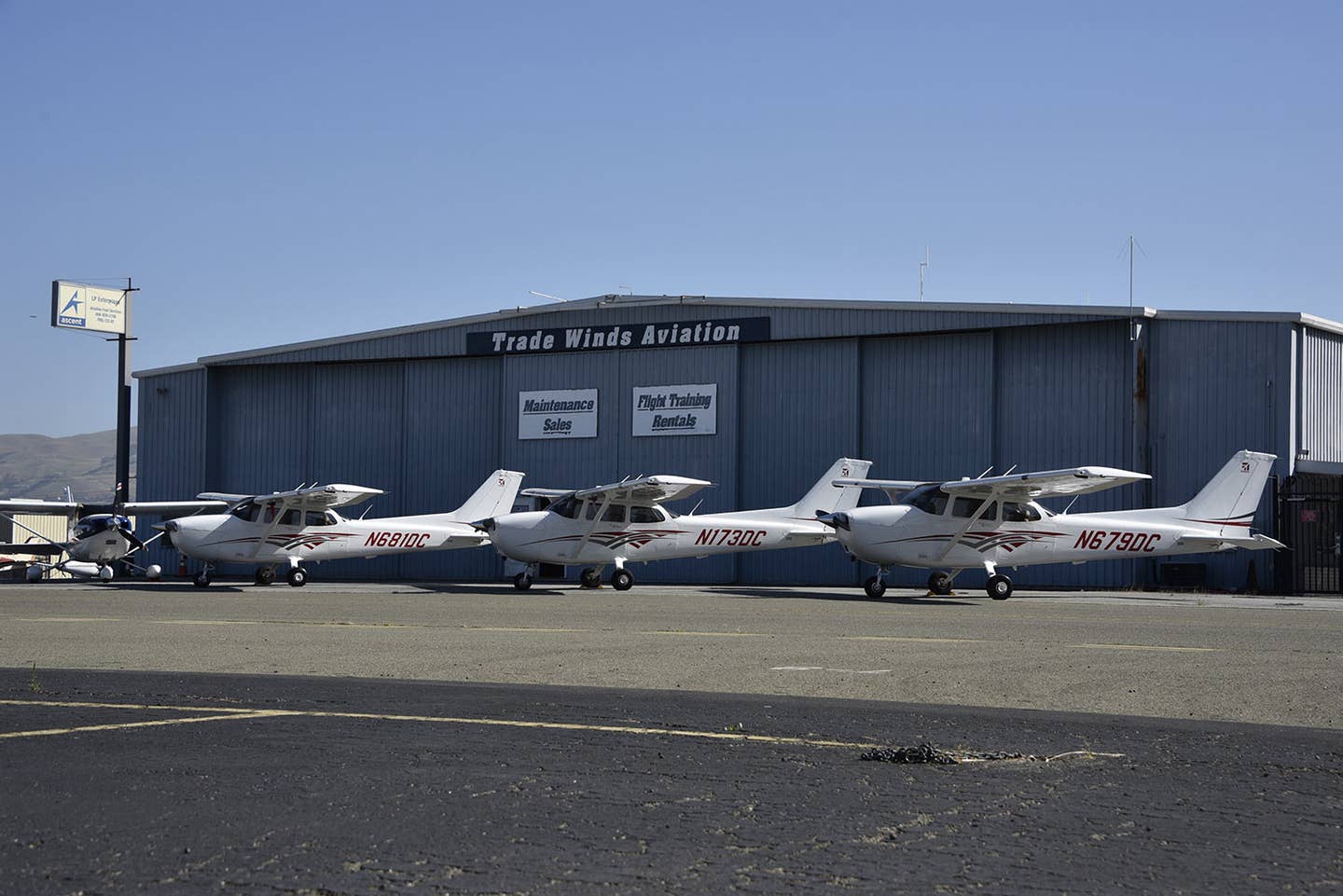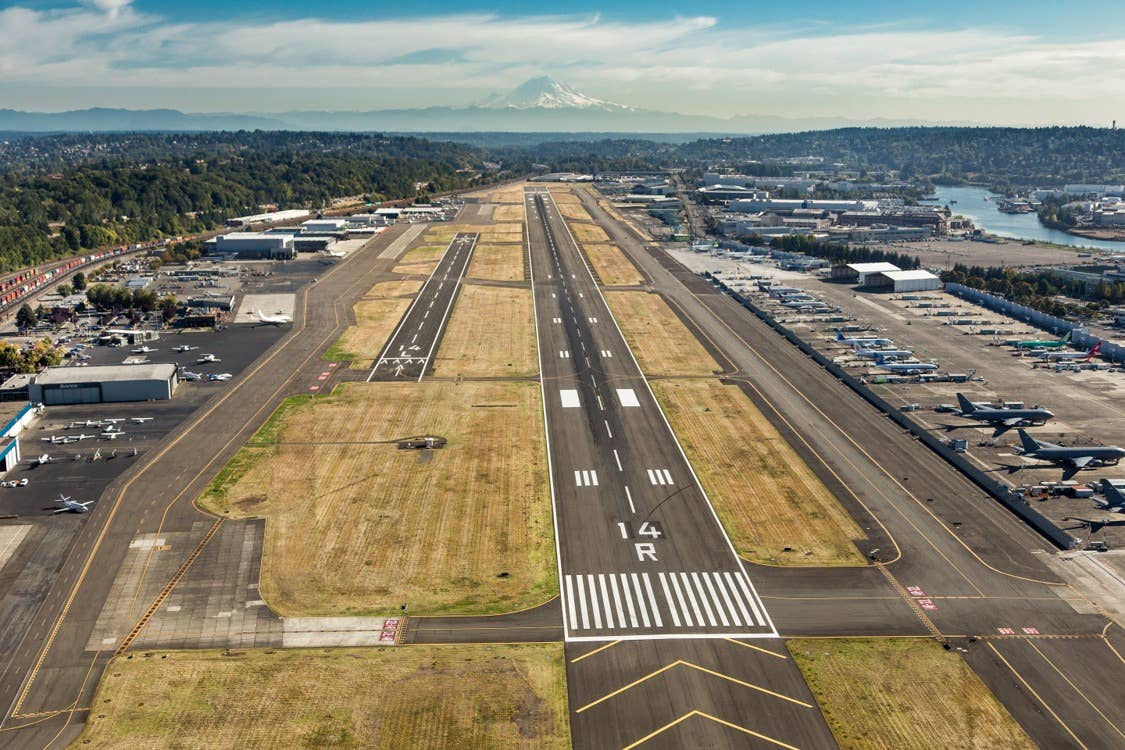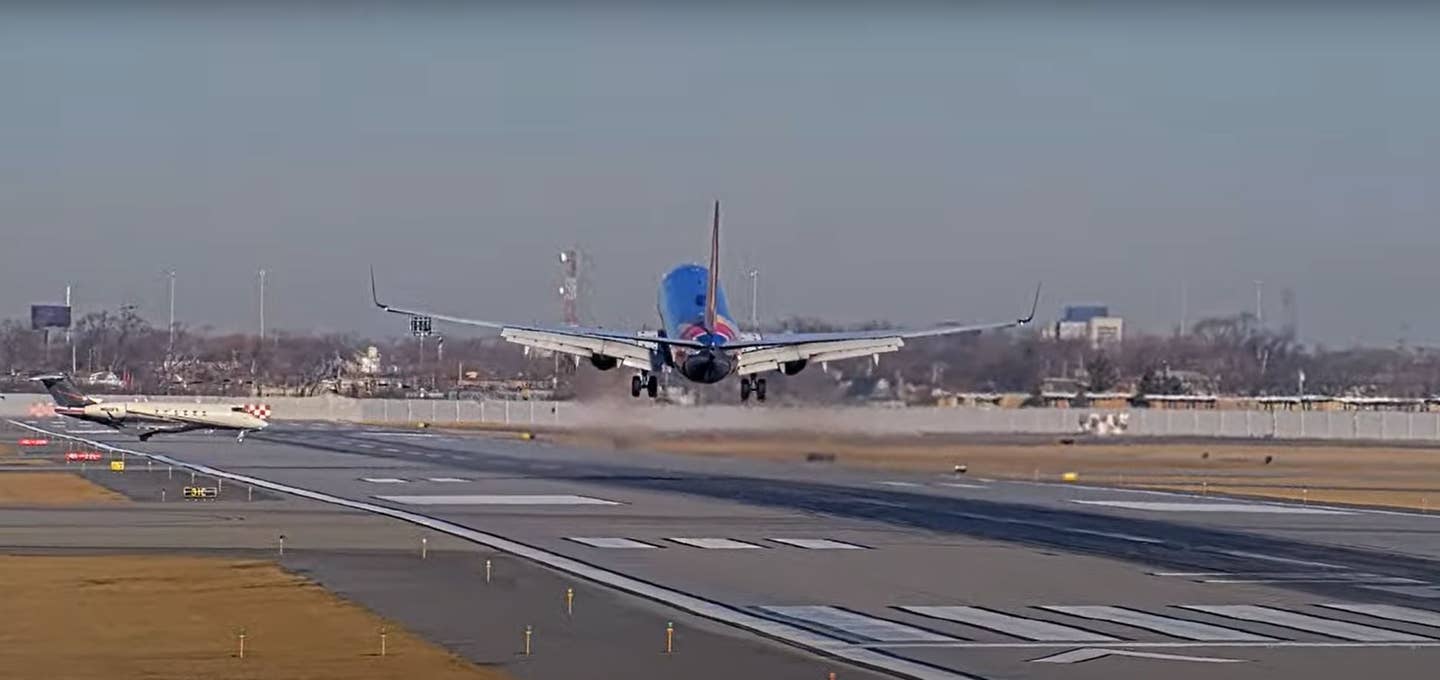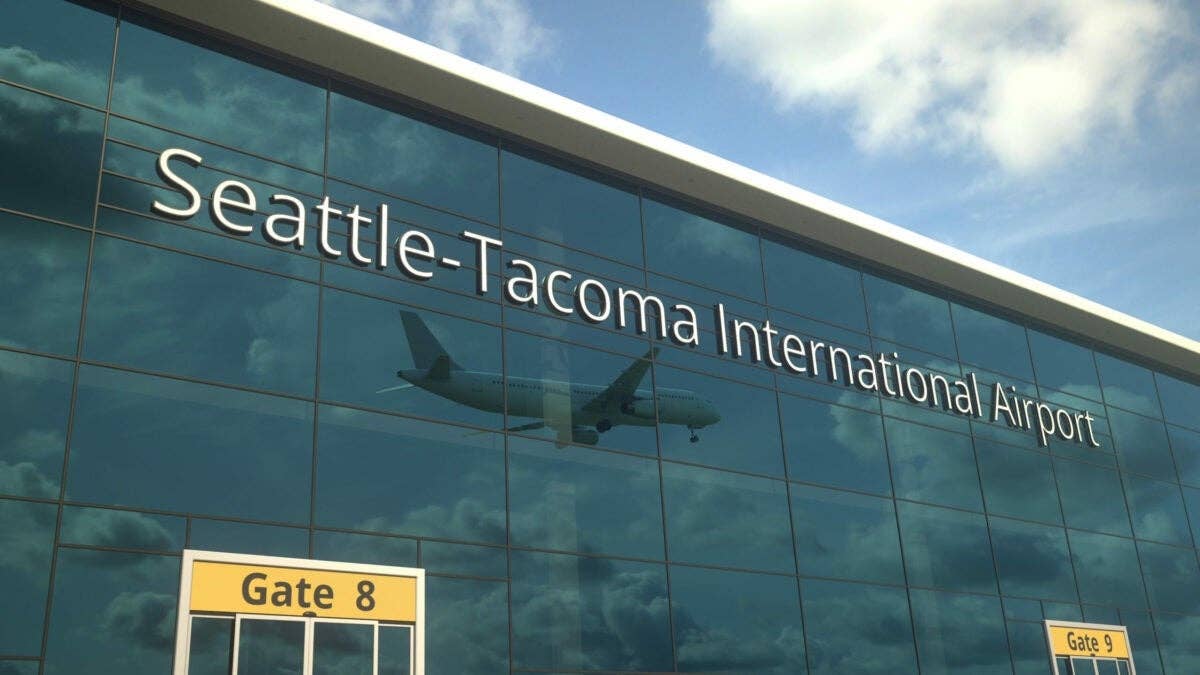Did You Know? 11 Fun Facts About Runways
Here are some weird things you need to know to geek-out about this humble piece of infrastructure.
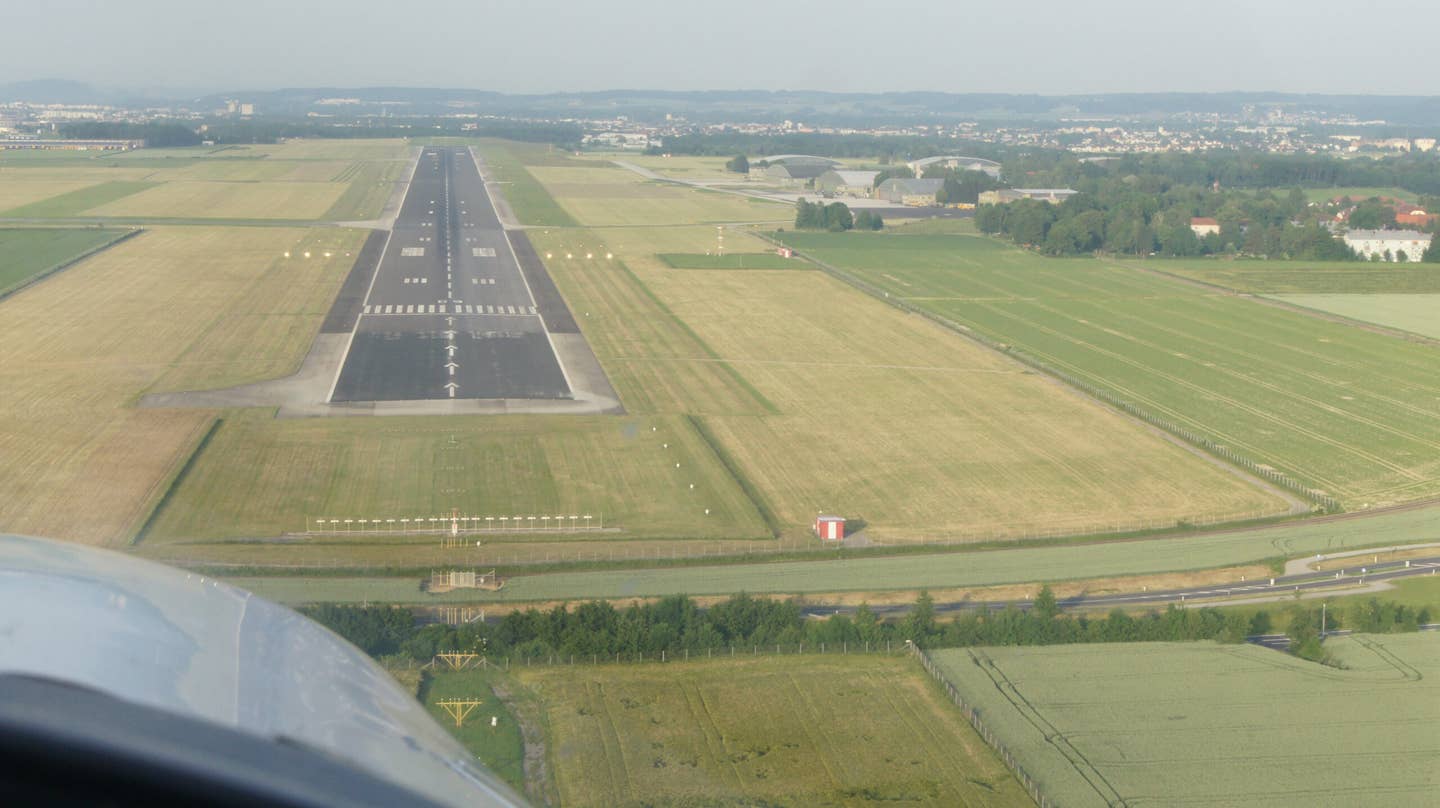
Airports can be hard to judge from the air. The FBOProps app seeks to reveal what arriving pilots can expect. [Courtesy: Shutterstock]
Editor’s Note: This article is part of special series spotlighting runways: April 18: America’s Longest Runways | America’s Shortest Runways | April 19: 11 Fun Facts About Runways | April 20: Self-healing Concrete and How It Can Save Runways | April 21: FLYING Explained: How Do You Read Airport Markings and Signage | Runway History | April 22: Remembering Meigs Field
In 1903, the Wrights brothers’ first flight took place, launching off a track on a sand dune in North Carolina. Soon after, other aircraft designs were developed—some successful, some not—and they all had one thing in common: they needed a way to get into the air and come back down safely.
The Wrights returned to Dayton, Ohio, and constructed a 240-foot wooden wheeled trolley and a catapult in a cow pasture. The catapult consisted of a 1,600-pound weight that was dropped from a 20-foot-high tower. When the weight dropped, the aircraft was propelled into the air. The Wrights continued to refine their flying machine, performing rudimentary maneuvers such as turns. For landings, the aircraft simply came down in the pasture.
The concept of a runway was still a few years away—but they were coming. Now, they come in all sizes. And no matter how long you’ve been flying, there are some things about runways that you probably don’t know.
For instance:
- They are usually aligned into prevailing winds. By looking at a sectional, you can get an idea of the prevailing winds in an area by noting the runway alignment. Case in point: the multiple runways in the Wichita, Kansas, area.
- Their numbers consist of the runway’s magnetic heading with the zero removed. Runway 16 is 160 degrees magnetic. Since the Earth's magnetic field is in flux, the numbers can change over time. When the magnetic field shifts more than 7 degrees, the runway will be renumbered. For example, Runway 16 could become Runway 17.
- Runways look flat, but they are actually designed with a slight crown in the middle, the same way streets are constructed, which allows for drainage during rain.
- They are inspected daily for foreign object debris, known as FOD. An airport employee often drives a truck with a large magnet suspended from the rear bumper to pick up tools, inspection plates, and other metal objects that may have fallen off aircraft.
- The more paint (markings) on a runway, the more traffic it gets. Runways with the vertical stripes arranged parallel to the centerline—the so-called “piano keys” on the approach ends—indicate a runway used for an IFR precision approach.
- The segmented circle—a device that tells the pilots what directions to make turns in the traffic pattern—is designed to be visible from 1,000 feet in the air. The short part of the "L" shape indicates which direction the pattern is, left or right. The segmented circle is usually located near the airport windsock.
- Left traffic (all turns to the left) came to be the way most patterns work because, as the propeller rotates to the right, it is easier for most propeller-driven aircraft to turn to the left.
- “RP” on a sectional or terminal area chart indicates that the runway has right traffic, meaning all turns are to the right. This can change if something noise sensitive is built on one side of the airport—such as a hospital or school—making it more prudent to move air traffic to the opposite side of the runway.
- The takeoff and landing performance charts for training aircraft are done with the understanding there is a 50-foot obstacle at the end of the runway. In reality, many airports have a clear path off the extended centerline of the runway.
- The FAA does not have a metric designation for what is considered a “long” runway. When commercial aviation was in its infancy, municipal airports had runways measuring 2,500 feet. These days, the term “long” is subjective and very often based on the type of aircraft being flown. Often, it is the insurance company that establishes the minimum length of runway the aircraft can use. For example, a corporate pilot flying a light jet might have a limitation “no takeoff and landings on runways less than 5,000 feet.”
- During World War II, the Boeing Company. disguised Plant 2 in Seattle by putting a fake residential neighborhood on top of the roof of the factory. The faux neighborhood had houses and streets and even cars parked on it—all in 3/4 scale made from chicken wire, plaster and wood. From the air, it looked like a neighborhood with a big runway next to it. A similar camouflage was also constructed to hide the Douglas Aircraft Company at the Santa Monica Airport (KSMO) in California.

Sign-up for newsletters & special offers!
Get the latest FLYING stories & special offers delivered directly to your inbox

